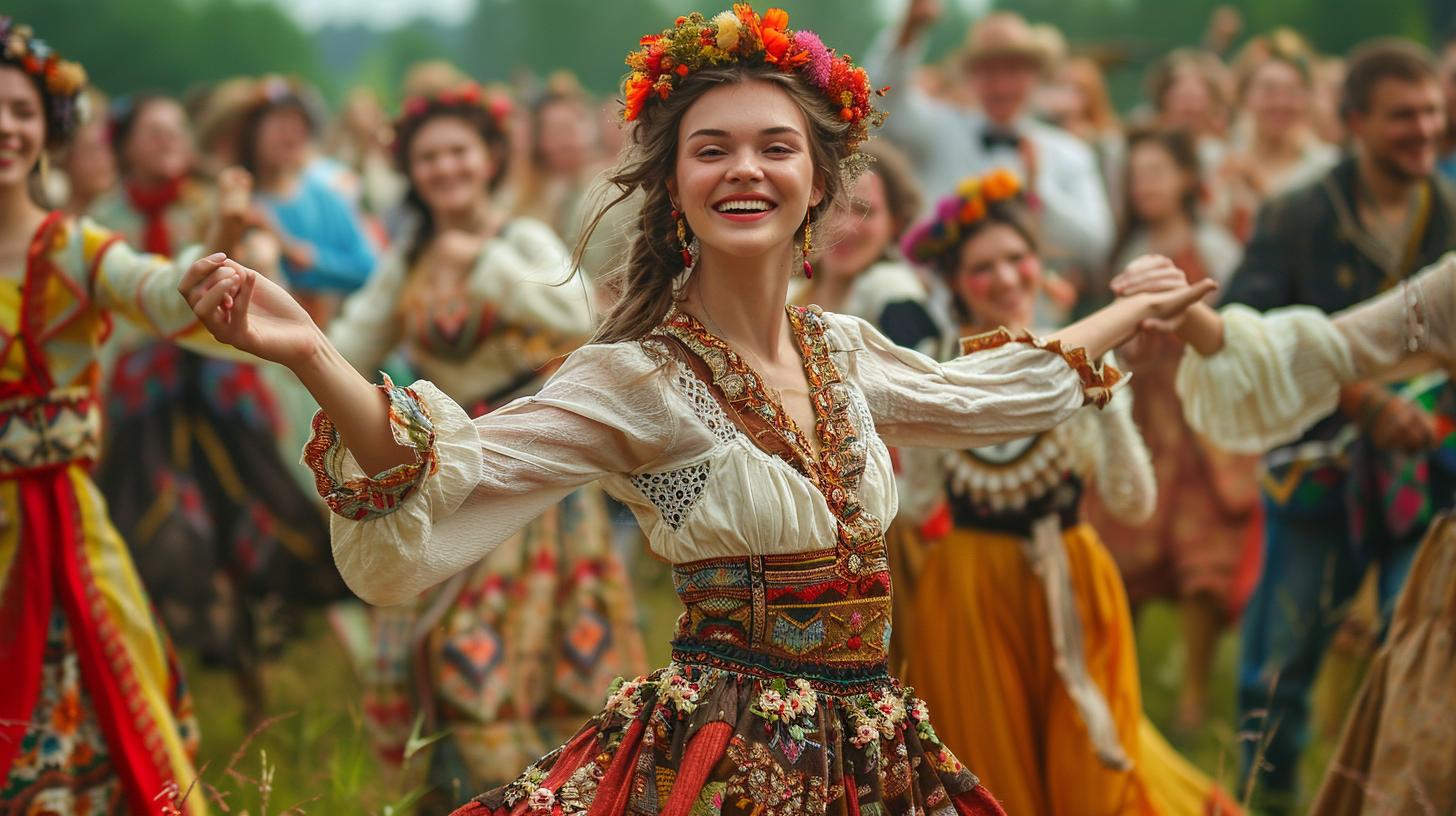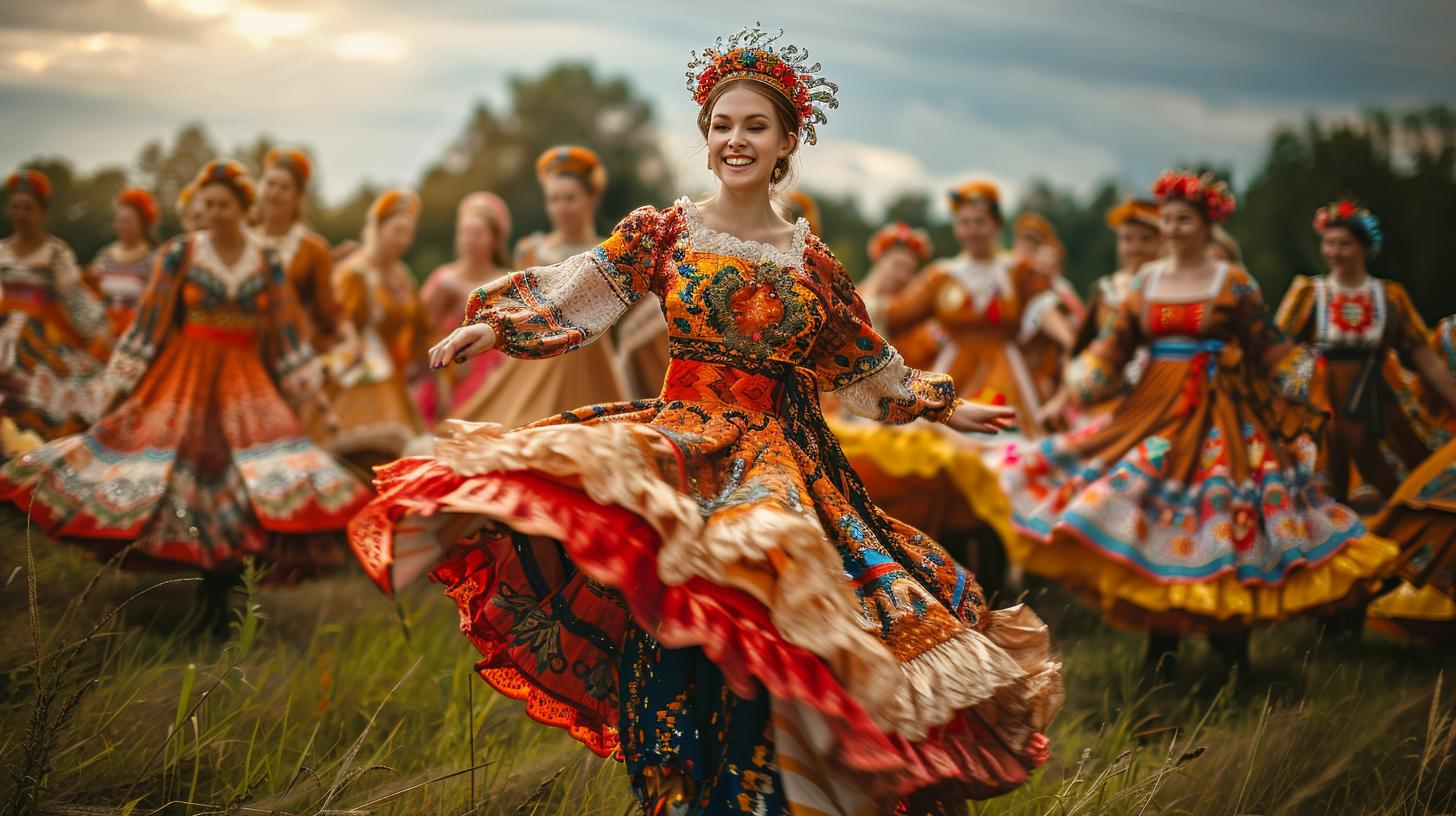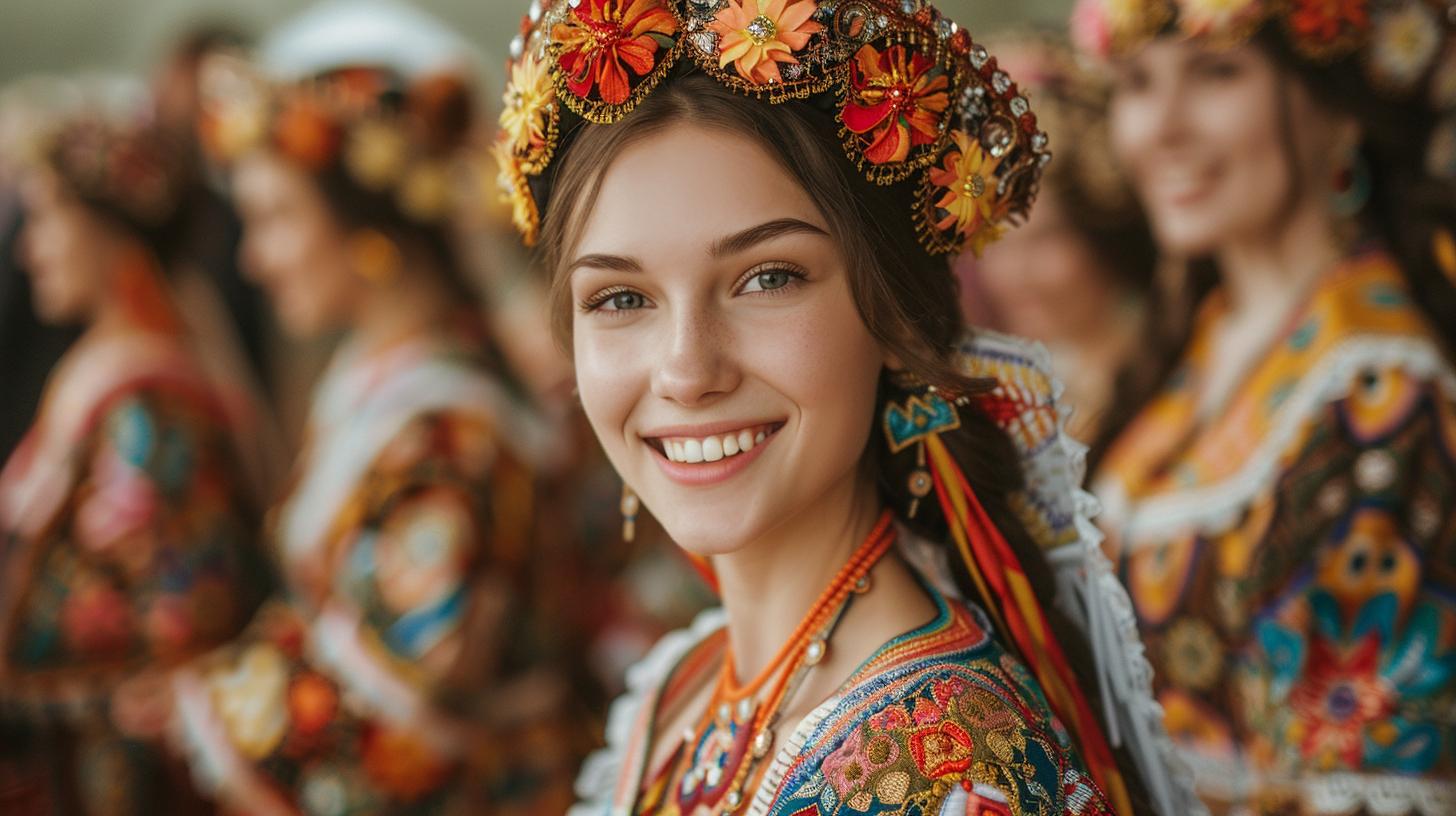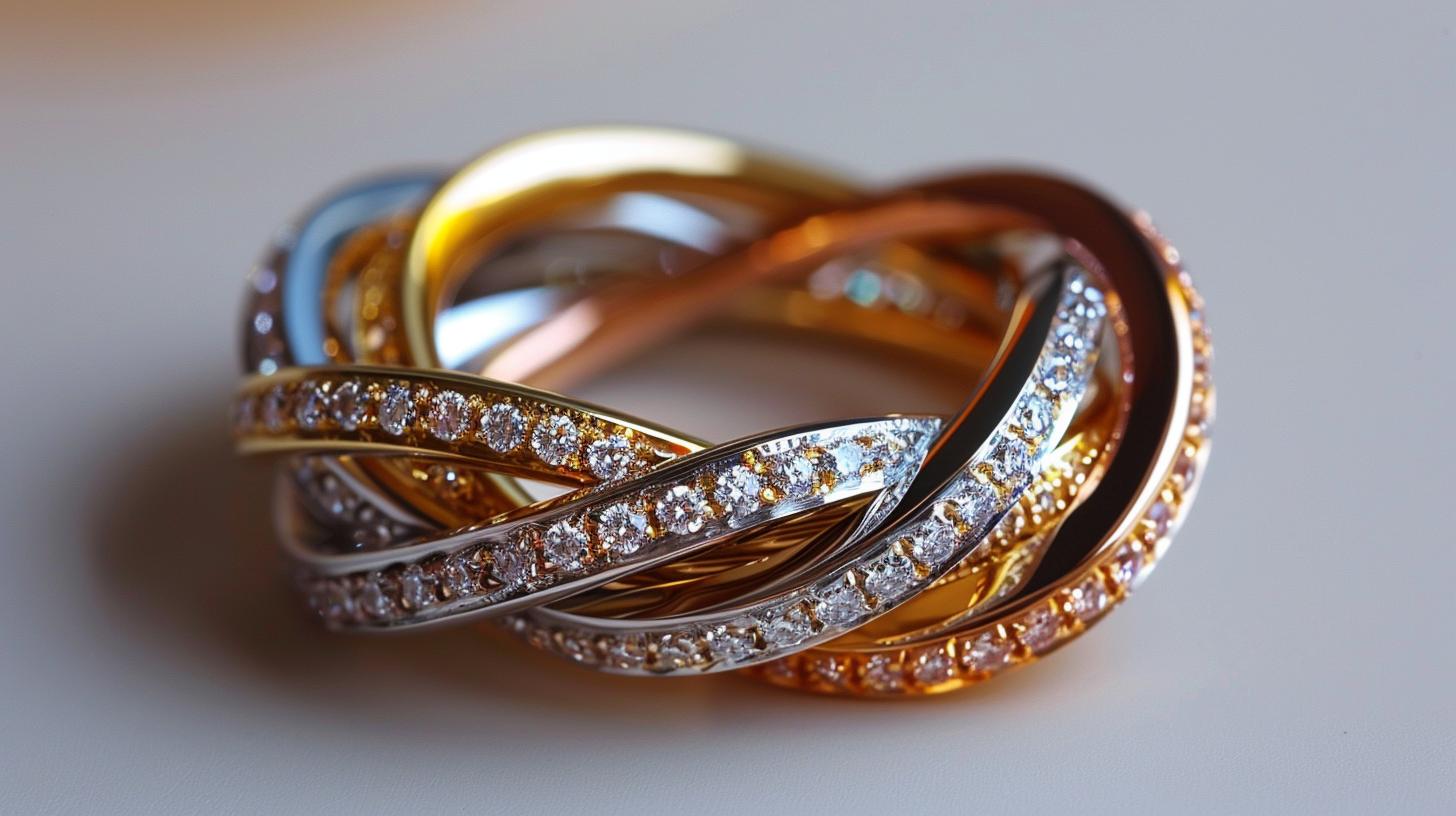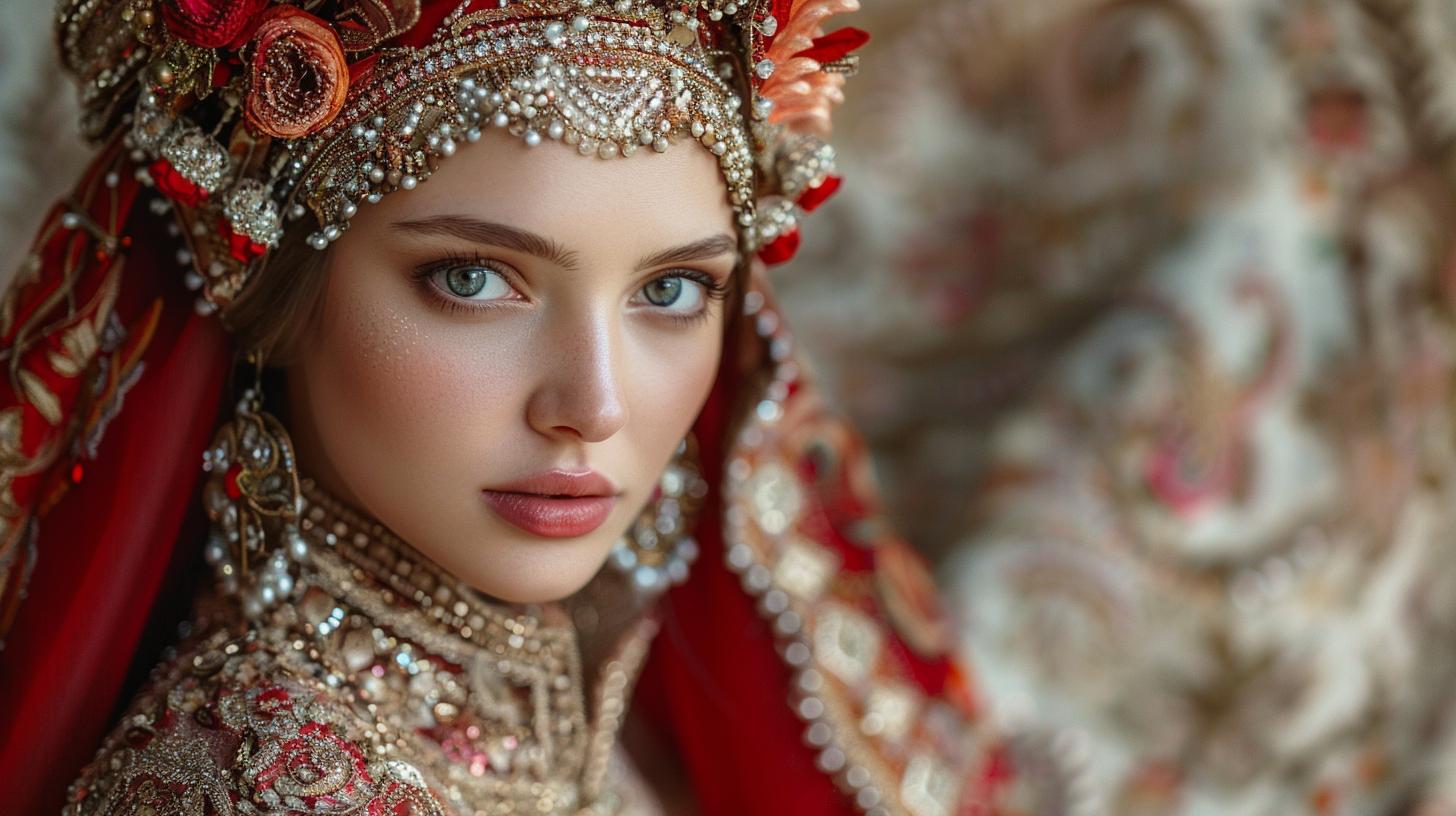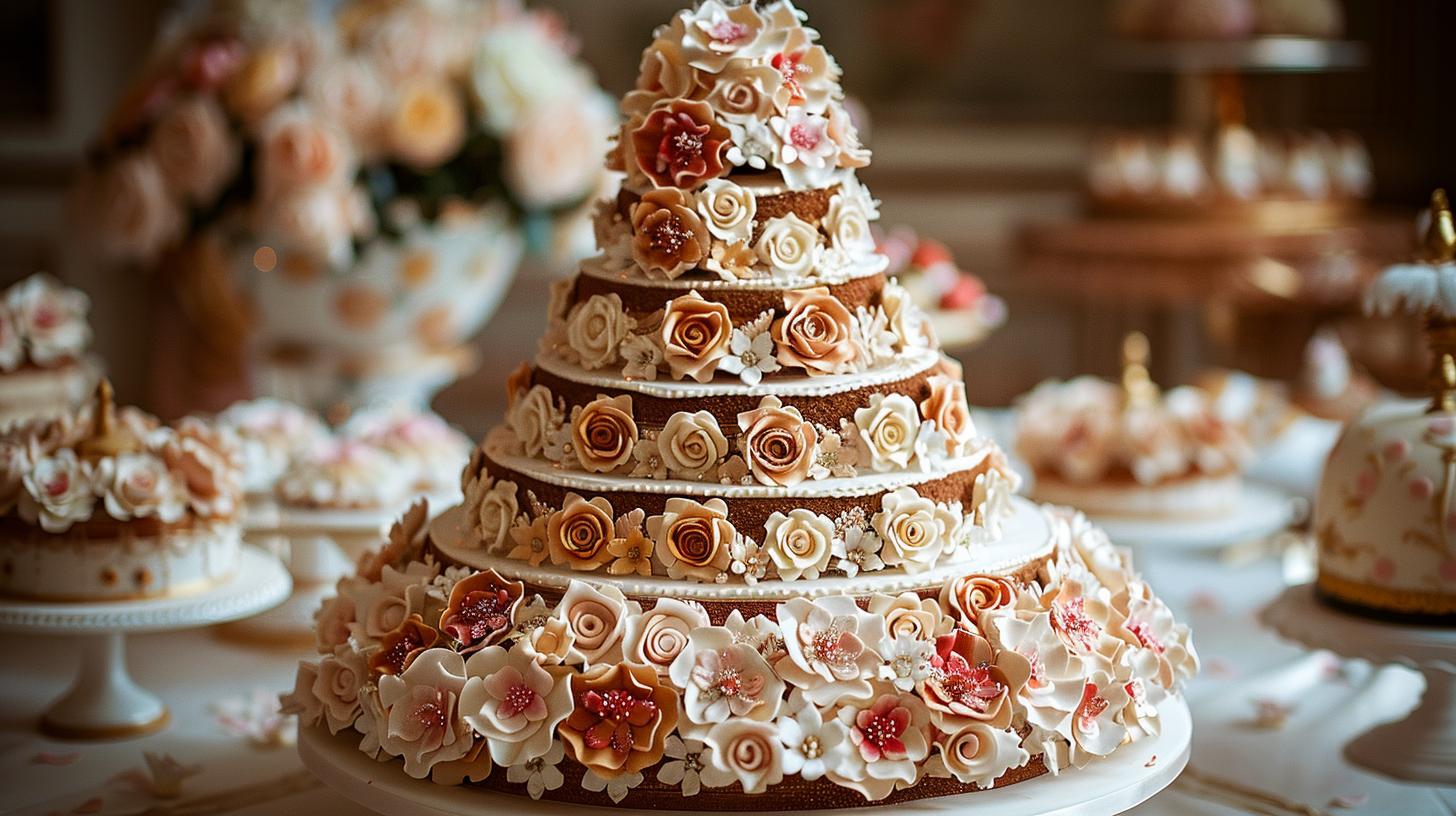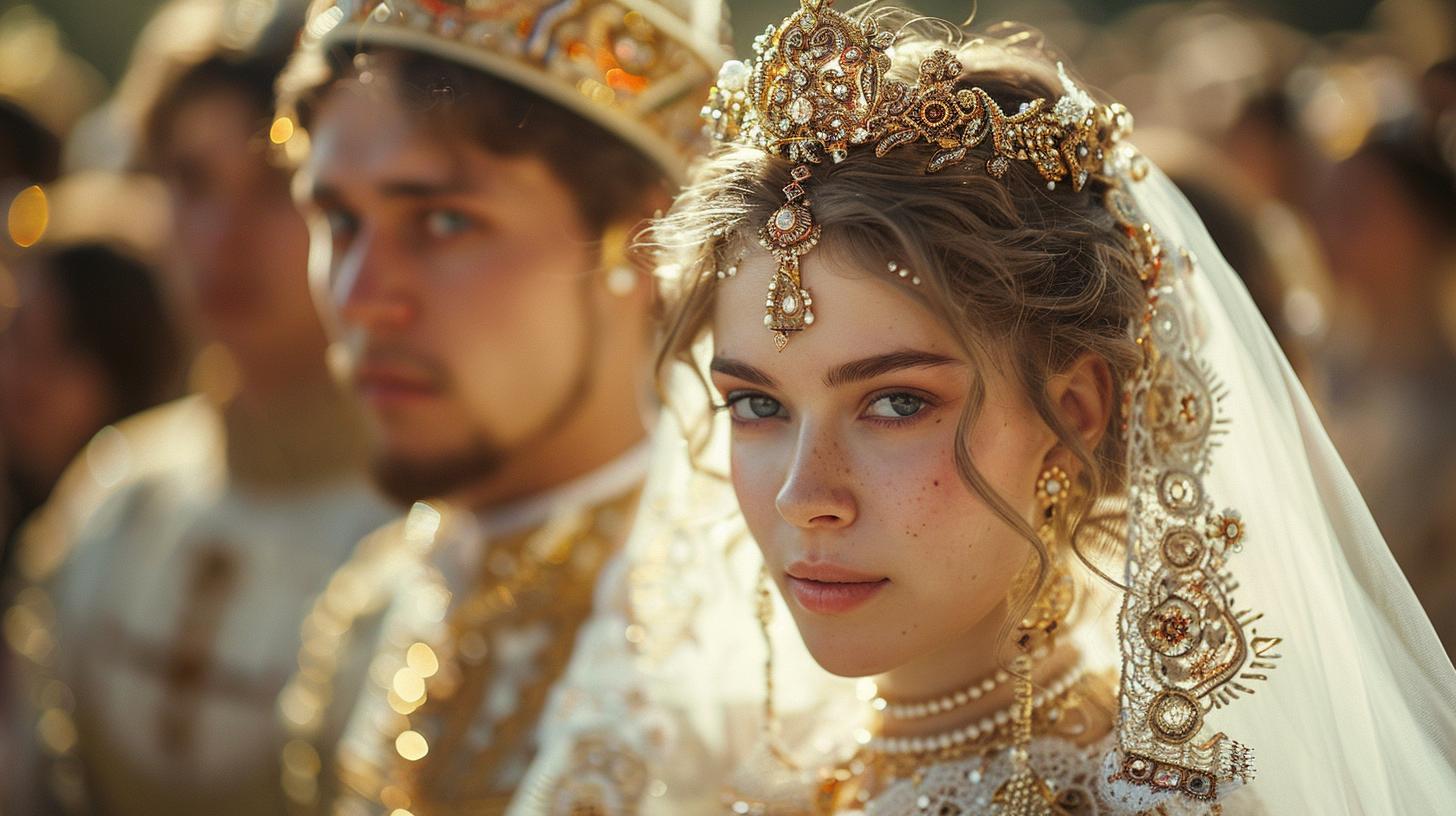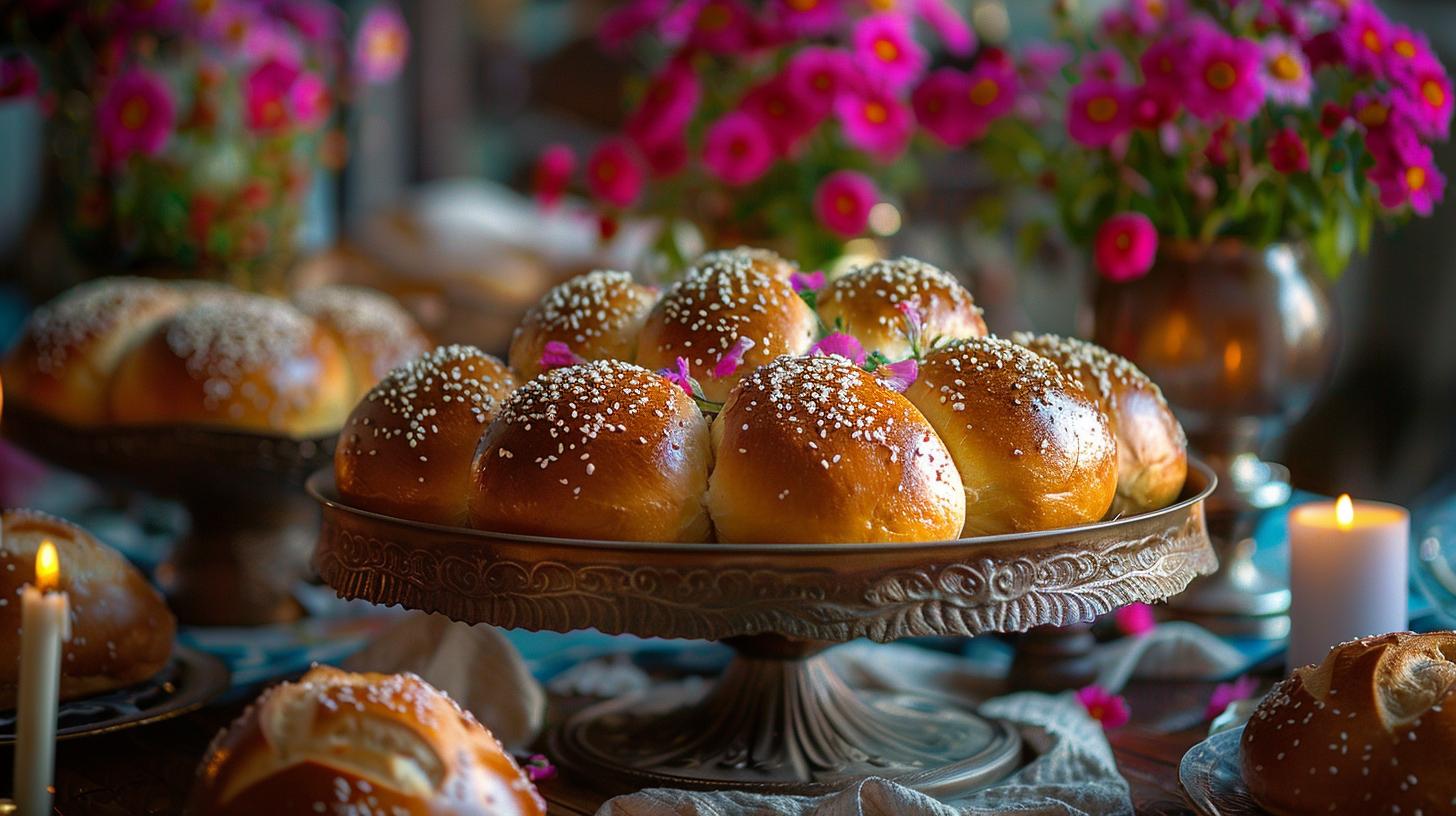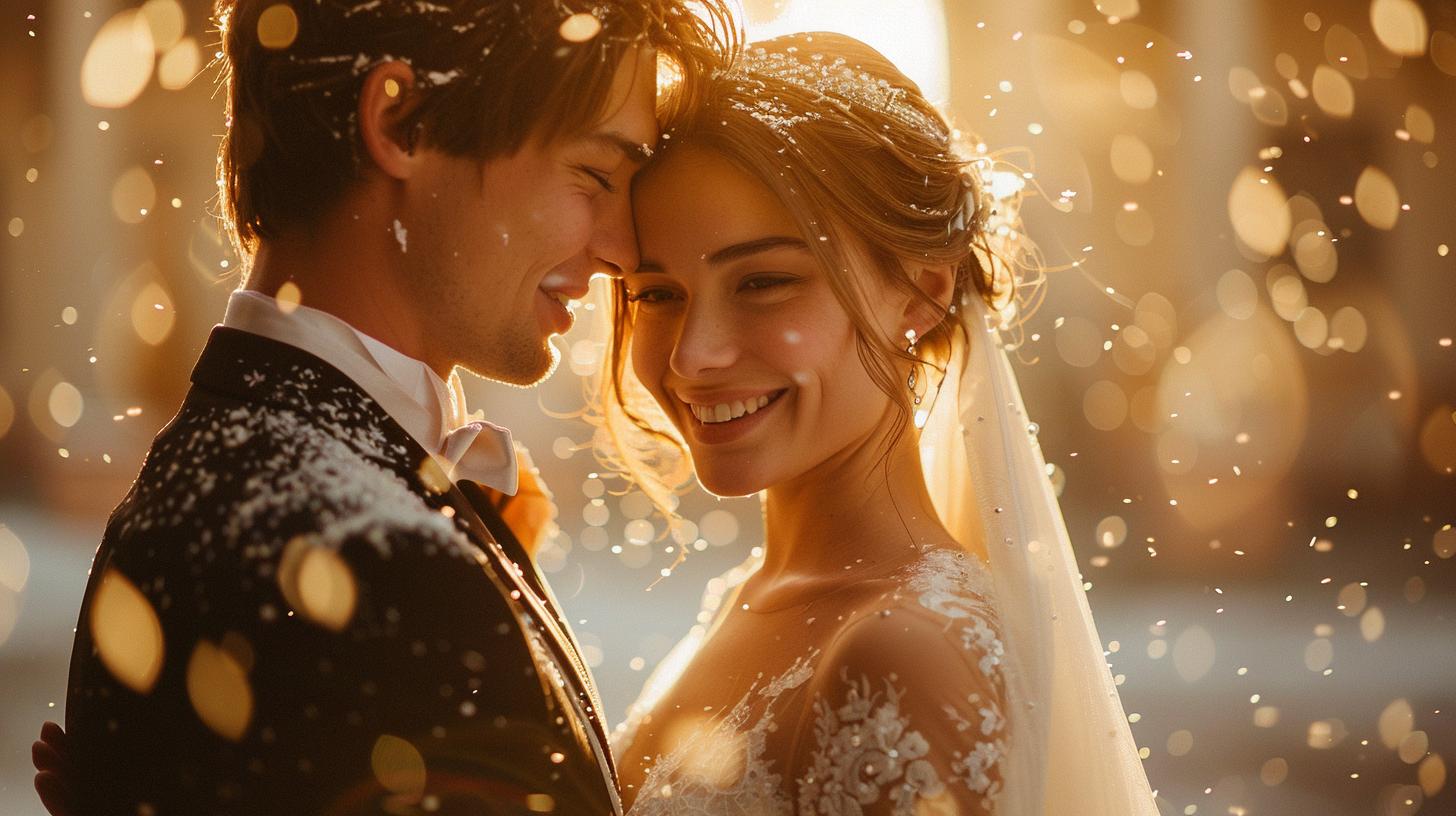Russian Wedding Dance: Traditions and Experiences
Russian wedding dances hold cultural significance and reflect the rich traditions of the community. These dances serve as a means of celebration during wedding ceremonies, showcasing joy and unity among families and friends.
Various traditional dances, such as polka and kolomyjka, highlight the diversity within Russian weddings. Planning the dance is an important aspect, influencing the overall atmosphere of the reception and guest participation.
The Cultural Significance of Dance in Russian Weddings
Dance plays a vital role in Russian weddings, serving as an expression of joy and cultural heritage. It fosters community bonding and creates memorable experiences for the couple and their guests.
Origins and History
The tradition of dance at weddings in Russia has deep historical roots, tracing back to ancient rituals and festivities. Early weddings included dances that celebrated the agricultural cycles and community life.
These dances were often a way to unite families and convey the importance of kinship.
Over time, the evolution of dance styles reflected the region’s diverse cultural influences. As different ethnic groups interacted, they infused their unique styles into wedding celebrations.
This melting pot of traditions culminated in a rich tapestry of dance that continues to be cherished today.
Symbolism and Meaning
In Russian weddings, dance is not merely entertainment; it carries profound symbolism. It represents unity and the joining of two families, often showcasing the couple’s new life together. Traditional dances symbolize fertility, prosperity, and happiness, encapsulating the desires and hopes of the newlyweds.
Each specific dance is rich in meaning. For instance, the communal aspect of group dances symbolizes the support of the extended family and community. Furthermore, the manner in which the couple dances together can signify their harmony and future relationship dynamic.
Differences Between Russian and Ukrainian Traditions
While Russian and Ukrainian wedding dances share commonalities, distinct differences exist that highlight each culture’s uniqueness. Ukrainian weddings often feature a more pronounced emphasis on folk dances, showcasing regional attire and storytelling through movement.
The interplay of traditions enhances the celebration, making each wedding a unique event that honors both heritage and the couple’s story.
Types of Traditional Russian Wedding Dances
The variety of traditional Russian wedding dances reflects the rich cultural heritage and communal spirit of the celebrations. Each dance has its unique characteristics, embodying different cultural meanings and providing an opportunity for joyful participation from guests.
Polka
Polka is a lively and infectious dance that originated in Central Europe but has become a staple in Russian weddings. It is characterized by its quick tempo and simple, yet energetic, movements.
Typically performed in a circle, this dance encourages everyone to join in, creating an atmosphere of excitement and camaraderie.
The steps consist of a series of hops and slides, allowing dancers to maintain high energy throughout the performance.
The music accompanying the polka is often upbeat, making it difficult for anyone to resist participating. Polkas can vary by region, with some variations incorporating unique local styles, further enriching the dance’s cultural significance.
Kolomyjka
Kolomyjka is another popular traditional dance that holds a special place in Russian wedding customs. Originating from Ukraine, it has been embraced in various Russian regions, celebrated for its vibrant rhythm and infectious joy.
The dance is usually performed in a circle, with dancers moving in a coordinated fashion, sometimes resembling a playful interplay of participation and competition.
Participants often reform the circle as they perform, allowing for spontaneous changes in partners and creating an engaging social atmosphere.
The lively melodies paired with specific footwork encourage all attendees to join in, reinforcing the sense of unity and festivity at a wedding celebration. Kolomyjka dances may include specific calls and responses, adding to the fun and spontaneity, making every performance unique.
Hora and Circle Dances
The Hora, a traditional circle dance, further exemplifies the communal aspect of Russian weddings. Commonly seen in various Eastern European cultures, the Hora is characterized by its circular formation, where dancers hold hands and move together in sync.
This dance symbolizes harmony, connection, and shared joy, often bringing together all guests, regardless of their dancing experience.
Circle dances also encompass various regional variations that highlight local traditions. They serve as a physical manifestation of unity, allowing individuals to join in regardless of skill level.
The right planning ensures that the dance complements the overall celebration and encourages participation from both Russian and non-Russian guests.
Choosing the Right Music
The choice of music sets the mood for the dance floor. Traditional Russian wedding songs are often preferred, as they resonate with cultural significance and encourage lively participation. It’s essential to curate a playlist that includes:
- Classic Russian folk songs that invite guests to get up and dance.
- Popular contemporary hits that appeal to younger generations.
- Instrumental pieces for slower dances, such as the first dance of the couple.
Mixing various music genres can enhance the dancing experience, keeping the energy high and engaging all attendees.
Collaborating with the couple and perhaps their families can help ensure that the music reflects their personal tastes and cultural backgrounds.
Hiring a DJ or Band
The decision between hiring a DJ or a live band depends on the desired atmosphere and budget. Each option has its advantages:
- Hiring a DJ: A DJ can provide a broad range of music and seamlessly transition between songs.
They can read the crowd and adjust the playlist on the fly, ensuring everyone remains engaged.
- Live Band: A live band can enhance the celebratory ambiance, delivering an exciting and interactive performance.
This option often allows for a more personal touch, as many bands specialize in traditional music.
Ultimately, it’s important to conduct thorough research, listen to samples, and check reviews before making a choice.
Having a good rapport with the music provider can also facilitate a smooth event.
Setting Up the Dance Floor
A well-organized dance floor can significantly impact the success of the dancing. Key considerations include:
- Location: The dance floor should be centrally located to encourage participation while being accessible. It’s often set up near the dining area or the stage for entertainment.
- Space: Ensure there is enough space for everyone to dance comfortably.
A cramped dance floor can hinder participation and limit movement.
- Lighting: The right lighting creates an inviting environment. Soft lights can set the mood, while flashing lights and spotlights can energize the dance floor.
Involving family members in the setup can help personalize the space, making it feel more festive and welcoming.
Consider including decorations that reflect the couple’s story or shared interests to enhance the festive spirit.
Modern Adaptations in Russian Wedding Dances
This evolution reflects the dynamic nature of culture and the desire for inclusive celebrations that honor both heritage and personal expression.
Incorporating Contemporary Music
The integration of contemporary music into wedding celebrations has become commonplace. Modern couples often opt for popular hits that can encourage more participation from younger guests. This blend of traditional and current tracks creates an inviting atmosphere, allowing for celebratory dance styles that vary throughout the event.
- Popular genres like pop, hip-hop, and electronic dance music are frequently utilized.
- Couples might choose remixes of traditional tunes to bridge generations.
- The inclusion of live bands that perform modern covers adds a unique flair to the celebration.
Fusion of Cultures in Dance
The growing trend of multicultural weddings has led to the fusion of various dance styles within Russian wedding celebrations.
Couples from different backgrounds often incorporate elements from their respective cultures, creating a rich tapestry of dance experiences. This merging not only enhances the festivities but also symbolizes unity and love.
- Latin dances, such as salsa or mambo, may be introduced alongside traditional Russian steps.
- Influence from American wedding traditions, like the first dance, can interweave with Russian customs.
- Choreographed group dances and flash mob performances have gained traction, bringing an upbeat energy to the celebration.
Popular Russian Wedding Dance TikTok Trends
The rise of social media platforms, particularly TikTok, has influenced how couples approach their wedding dances.
Viral dance challenges and trends allow newlyweds to showcase their celebrations in innovative ways. This modern twist also encourages more interactive and fun experiences for guests.
- Couples create personalized dance routines that reflect their personalities and story.
- Participating in trending TikTok challenges creates memorable moments that guests can share online.
- The incorporation of group-themed dances allows everyone to join in, fostering a sense of community among guests.
The Dance at the Reception
The dance at the reception is a vibrant centerpiece of Russian weddings, blending tradition and personal expression.
It fosters a sense of community, allowing families and friends to celebrate the newlyweds in a festive atmosphere.
First Dance of the Bride and Groom
The first dance symbolizes the couple’s first act as a married pair. This intimate moment is often enhanced by a carefully chosen song that holds special meaning for the couple. Traditionally, the couple may select a classic Russian love song, or they could opt for a contemporary piece that resonates with their relationship.
As the couple takes the floor, guests often gather around to witness this joyful moment. The atmosphere can be charged with emotion, showcasing not just the couple’s love but also their cultural heritage.
Depending on the couple’s preferences, this moment may be choreographed, or they may choose to dance naturally, adding a personal touch to the experience.
Family and Friends Participation
Following the bride and groom’s first dance, family and friends are usually invited onto the floor. This participation highlights the communal aspect of the celebration, where everyone’s involvement adds to the joyous atmosphere.
It creates an inclusive environment, allowing guests of all ages to join in the festivities.
Typically, family members may have their own traditional dances, encouraging everyone to connect and celebrate together.
The music transitions to familiar tunes that evoke nostalgia and energize the crowd. The presence of joyful interactions among guests fosters a sense of unity and celebration. Guests often form circles and join hands, leading to enthusiastic participation.
Dance Games and Activities
Incorporating dance games and activities into the reception further enhances the celebratory ambiance. These activities not only entertain but also provide an opportunity for guests to interact and bond. Popular games might include:
- Russian Circle Dances: These traditional dances often involve participants forming a large circle, moving in rhythm to lively music.
They encourage collective participation, adding a lively energy to the celebration.
- Dance-off Competitions: Friendly competitions inspire guests to showcase their best moves, generating laughter and engagement among the attendees. These moments often lead to memorable interactions.
- Group Line Dances: Simple choreographed line dances can be inclusive, making it easy for everyone to join in, regardless of their dancing abilities.
These interactive elements enhance the atmosphere, making the reception a dynamic celebration filled with laughter, joy, and dance.
Each game’s intent is to foster connections among guests and ensure a festive mood that lasts throughout the evening.
Guest Expectations and Participation
In Russian weddings, guest expectations regarding participation in dance are crucial for creating an engaging atmosphere. Various customs and cultural norms shape how guests are invited to join the festivities, ensuring that everyone feels included in this joyful celebration.
How Guests Are Invited to Dance
Inviting guests to dance during a wedding is often a lively process that begins early in the celebration. Typically, the couple or the hosts will set the tone by making announcements to encourage everyone to join in.
This can be done through:
- Direct invitations during speeches or toasts.
- Using a designated MC or DJ to facilitate and prompt participation.
- Creating an environment that feels welcoming and festive, making it clear that dancing is a central activity.
Guests may also be invited to dance through traditional rituals or by participating in group dances that encourage collective involvement.
The mood can be enhanced by lively music, which often leads to spontaneous dance performances from guests of all ages.
Role of Family and Elders
Family members, especially those from older generations, play a significant role in guiding participation in dance. Their influence is vital in reinforcing cultural traditions and expectations. Elders often lead by example, taking the floor themselves, which can motivate younger guests to join in.
Their participation is viewed as a sign of respect for the couple and their families.
In many cases, elders may lead traditional dances, imparting their knowledge of the movements and rhythms to the younger generations.
This transmission of culture through dance creates a stronger bond within the family and among the guests.
Including Non-Russian Guests
In multicultural weddings, incorporating non-Russian guests into the dance festivities is essential for creating a unified celebration. Strategies for inclusion may involve:
- Brief explanations of the dance styles and steps during the event.
- Choosing music that resonates with different cultures to make everyone feel comfortable.
- Creating simple, accessible group dances that invite participation from all attendees, regardless of their prior experience.
Non-Russian guests often appreciate the opportunity to engage in authentic cultural practices.
Couples may also consider dedicating specific songs or dances that are popular in wider contexts, allowing all guests to share in the joy of the celebration.
Non-Dance Traditions in Russian Weddings
In Russian weddings, non-dance traditions play a significant role in enhancing the celebration.
These rituals often involve heartfelt toasts, engaging games, and other cultural practices that bring guests together and enrich the festive atmosphere.
Toasts and Vodka Rituals
Toasts are an integral part of Russian wedding festivities. They often serve as a way to celebrate the couple, share sentiments, and invoke blessings from family and friends. The practice of toasting typically involves the following elements:
- Formal Segments: The main toasts usually take place during the meal.
The father of the bride frequently begins, followed by the groom and other key figures.
- Vodka Tradition: Vodka is a staple at Russian weddings, symbolizing hospitality and joy. Guests are often encouraged to raise their glasses and drink together, creating a sense of unity.
- Personal Touches: Guests may share anecdotes or well-wishes, adding a personal touch to their toasts and fostering a sense of closeness among attendees.
Traditional Games and Performances
Games are another captivating aspect of Russian weddings, often providing entertainment and engaging guests in a fun, interactive manner.
Some commonly observed traditional games include:
- The Shoe Game: The bride and groom take off their shoes and hold one of each in their hands. They then answer a series of questions by raising the shoe that corresponds to their answer, prompting laughter and revealing insights about their relationship.
- Wedding Quizzes: Family members and friends may prepare quizzes testing the couple’s knowledge of each other or shared experiences.
This activity fosters connection between guests and the couple.
- Dance Performances: While not focused on audience participation, traditional dance performances are often included in the wedding program. These displays celebrate cultural heritage and showcase the skills of local dancers.
The Role of Music Beyond Dancing
Music is a vital component of Russian weddings, transcending beyond simply accompanying dance.
It enriches the overall atmosphere in various ways:
- Setting the Mood: Live bands or orchestras may play traditional music throughout the event, creating a festive environment even during meals and non-dance segments.
- Cultural Significance: Specific songs often carry deep cultural meanings, invoking nostalgia and connecting individuals to their heritage.
These melodies are an essential thread in the fabric of the wedding day.
- Background Music for Toasts: Instrumental music often plays softly behind speeches and toasts, enhancing the emotional impact of the words shared.
Personal Stories and Experiences
Personal narratives play a vital role in understanding the cultural significance of dance at weddings.
These experiences provide insight into how traditions are adapted and celebrated, showcasing the joy and connection that emerges through shared moments of dance and celebration.
Mixed-Culture Weddings
In today’s diverse society, it’s common for couples to blend traditions from different cultures. Mixed-culture weddings often incorporate elements from both backgrounds, creating a unique celebration. Many couples share stories of how they combined Russian and other cultural wedding traditions to create a memorable experience.
- One couple included traditional Russian dances alongside popular American songs, allowing guests of all backgrounds to participate and enjoy the festivities.
- An immigrant bride from Ukraine shared how she incorporated her family’s favorite dances, like the kolomyjka, with popular Latin rhythms, bridging the gap between her heritage and her partner’s background.
- Another couple recounted their experience of using a blend of customs from their families, including a traditional Russian bread and salt ceremony, followed by line dancing that was familiar to friends from different cultures.
Testimonials from Brides and Grooms
Brides and grooms often reflect on their wedding day with fondness, particularly regarding the dance portions of the celebration.
From the nervous tension before the first dance to the excitement of everyone joining in later, their stories are filled with emotion.
- A bride remarked, “Our first dance was a mix of a waltz and a popular current song.
The laughter and joy on our friends’ faces made it all worth it.”
- A groom shared, “I was surprised at how much everyone loved the polka. The dance floor was packed, and it turned into a very unifying moment for our families.”
- One couple highlighted how their families participated in popular dance games that broke down barriers and encouraged everyone to dance together, leading to unforgettable memories.
Memorable Dance Moments
Specific moments during wedding dances often stand out for couples and their guests, creating lasting memories that become treasured stories.
- A bride vividly remembers the sight of her grandmother leading a traditional Russian dance, surrounded by younger generations, creating an instant bond across ages.
- At another celebration, a spontaneous dance-off erupted during the reception, resulting in uproarious laughter and a sense of camaraderie among guests who had just met.
- One couple fondly recalls a surprise performance by their friends, who staged an impromptu dance number that included moves from various cultural backgrounds, delighting the entire audience.
.

